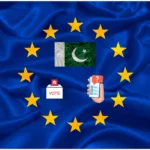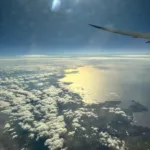
On 24th February, 2017 I presented some findings on the Changes in Political Protests in Pakistan since the 90’s, based on my field work last year. The presentation was made in a closed reading group organised by faculty members at the Hong Kong Institute of Humanities and Social Sciences (HKIHSS). In this post I summarize key findings of my presentation, some conclusions and finally a word on the reading group itself. I understand that use of certain terms will be unclear. I strongly encourage you to email so we can discuss.
Summary
I compared two major political protests, the Pakistan People’s Party (PPP) Long March in 1992 and Pakistan Tehreek-i-Insaf Azadi Dharna (PTI) in 2014. In the paper, my focus was on protesters organisation strategies and division of labour within the party. These two ‘variables’ (in a manner of speaking) are taken from Gamson and Wolfsfeld (1993) understanding of the relationship between movements and media. Worth to mention that even though focus is on protest strategies, specific focus is on those strategies that are most related to media. I will not present my research design here. Those who are interested can contact me via email. However, my data sources are Daily Dawn news archives from year 1992 and 2014 collected at Dawn library in Karachi. 17 in-depth interviews with various party media cell officers, campaign managers, journalists and civil society activists. I also conducted a focus group at the Karachi Press Club.
Key similarities and differences between PPP and PTI protest organisation:
- Patronage networks were leveraged in both protests but not as much by the PTI.
- Protest events for the PPP were rather diffused where as heavily concentrated for the PTI.
- Both protests chose the capital city as the major choice of mobilisation however, the PTI took special interest in concentrating resources there.
- PPP brick and mortar media presence remained mostly limited to its party headquarters in Karachi whereas PTI expanded such presence to major metropolis in the country.
Key similarities and difference between PPP and PTI division of labour:
- Both protests relied on campaign officers to generate corner meetings and mobilise people to protest sites and to agitate.
- Both protests relied on young volunteers however, PTI had a much more diverse cadre of youth activist specially in metropolis where traditionally vote banks don’t function as effectively.
- Both parties have media campaign managed by professionals but PTI campaigns were managed by professionals with a unique skill set related to electronic campaigns that PPP did not have.
- Other political parties, including PPP, have imitated PTI’s style of division of labour in its protests.
Some discussion
Bearing in mind the changes in media landscape since the 90’s, in particular the heavy presence of 24 hour news television in Pakistani politics we can see why PTI protests chose to concentrate in one location over a prolong period. It firstly facilitates television news crews that, unlike print reporters need heavy and expensive equipment for reporting. It is difficult for such crews to report on scattered events. Secondly, prolong stay in certain locations facilitates continuous and therefore live coverage of events. Unlike in the past, where such news crews (state television) were barely present or only supported the incumbent government. This certainly shows protesters changing tactics to get better media standing. Certainly the new forms of expertise required to capture, retain and facilitate this kind of news coverage was also present among the party’s media cell. Such new forms of organisation in other metropolis certainly helps in liaison with various TV news organisations. In contrast, PPP protesters had to find different ways to capture the news attention of a media landscape dominated by a print medium. It fits our understanding of news bureaus and correspondents located in different cities reporting the latest in their area. For after a while, news editors in major cities ignore the protest-as-usual to make room for other events.
About the reading group
This is a brief word on the purpose of the reading group and the format of presentations so that I may illuminate how academic communities are built. It is a learning process for me as well. So a major purpose, as I understand, is to bring together budding scholars studying diverse topics, in fairly diverse university departments within and outside Hong Kong, but with a common interest in anthropological methods. Such methods are distinguishable for presenting in ‘thick descriptions’ the phenomenon/process that are being explored. Journalism writing, if one can call it that, often employs such methods and I find that they are helpful when writing my reports which are indeed qualitative.
Each session has two parts, an hour devoted to a presentation followed by an hour on Q&A. Each presenter has to submit a paper in advance so that participants understand in detail the context of the presentation. For me, the core utility of this exercise is to use my arguments to engage with people who don’t know much about my area. And in the process make the arguments sharper.
Reference
Gamson, W. A., & Wolfsfeld, G. (1993). Movements and media as interacting systems. The Annals of the American Academy of Political and Social Science, 528(1), 114-125.










